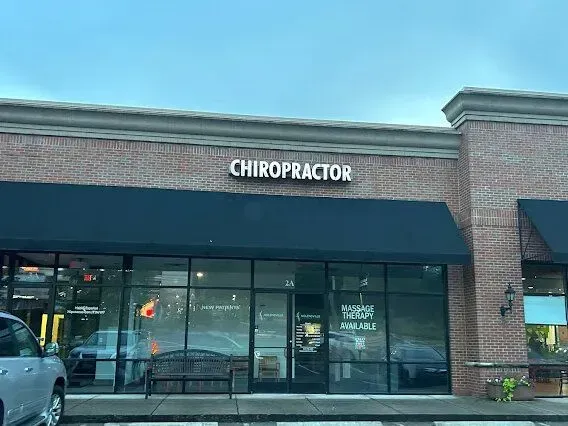When to Consider Chiropractic Care for Persistent Joint Stiffness
Chronic joint stiffness affects countless individuals who experience restricted movement in their neck, shoulders, back, or knees. Many people dismiss these symptoms as inevitable consequences of aging or physical activity, but persistent joint stiffness often indicates underlying alignment issues or compromised joint function that warrant professional evaluation.
Understanding when to seek chiropractic care and how it addresses joint mobility can help you make informed decisions about managing chronic stiffness and improving your overall quality of life.
Understanding Joint Stiffness and Its Impact
Joint stiffness manifests as limited mobility, tension, or restriction within a joint structure. This condition commonly affects the neck, spine, shoulders, hips, knees, and smaller joints including wrists and ankles. Patients typically notice symptoms upon waking, after prolonged sitting, or during routine activities such as reaching overhead or squatting.
The sensation varies among individuals, with some describing a tight or locked feeling while others experience soreness or discomfort during movement attempts. These symptoms can significantly impact daily function and overall mobility.
Primary Causes of Joint Stiffness
Several factors contribute to the development of joint stiffness:
Postural Dysfunction: Prolonged poor posture alters joint loading patterns and movement mechanics, leading to compensatory stiffness and reduced mobility.
Reduced Joint Motion: Sedentary lifestyles limit natural joint lubrication and circulation, resulting in decreased flexibility and increased stiffness.
Repetitive Stress: Occupational or recreational activities involving repetitive motions can cause cumulative joint wear and associated stiffness.
Spinal Misalignment: Vertebral subluxations or joint dysfunction can trigger protective muscle spasms and surrounding tissue tension.
Stress-Related Tension: Chronic psychological stress manifests physically through increased muscle tension and joint restriction.
When joints fail to function optimally, surrounding structures often compensate, creating a cascade of dysfunction that extends beyond the original problem area.
How Chiropractic Care Addresses Joint Stiffness
Chiropractic treatment focuses on restoring proper joint mechanics and spinal alignment through evidence-based interventions. Licensed chiropractors conduct comprehensive evaluations to identify areas of restricted motion and develop targeted treatment strategies.
Chiropractic adjustments support joint health through several mechanisms:
Restoration of Joint Motion: Spinal manipulation and joint mobilization techniques help restore normal range of motion and joint mechanics.
Reduction of Compensatory Patterns: Proper joint function reduces the need for surrounding muscles to overcompensate, decreasing overall tension.
Improved Neurological Function: Correcting spinal misalignments can enhance nerve communication and reduce pain perception.
Enhanced Overall Mobility: Patients often report improved movement patterns and functional capacity following consistent chiropractic care.
Modern chiropractic practice emphasizes individualized treatment approaches tailored to each patient's specific condition and functional goals.
Clinical Indicators for Chiropractic Consultation
Consider scheduling a chiropractic evaluation if you experience:
Persistent Symptoms: Joint stiffness lasting more than two to three weeks despite rest and conservative measures.
Functional Limitations: Stiffness that restricts daily activities or occupational performance.
Asymmetrical Symptoms: Notable differences in mobility or comfort between left and right sides of the body.
Movement-Related Discomfort: Pain or stiffness that worsens with specific positions or activities.
Postural Awareness: Sensing that your posture feels uneven or unbalanced.
Medication Dependence: Regular reliance on over-the-counter pain medications for symptom management.
A thorough chiropractic examination, including diagnostic imaging when appropriate, helps determine if chiropractic care is suitable for your specific condition and ensures safe, effective treatment.
Comprehensive Chiropractic Treatment Approaches
Modern chiropractic clinics offer diverse treatment modalities to address joint stiffness:
Spinal Manipulation: Precise manual adjustments to restore proper joint alignment and function.
Electrical Muscle Stimulation: Therapeutic electrical currents that promote muscle relaxation and tissue healing.
Mechanical Traction: Gentle spinal decompression techniques that relieve pressure on compressed structures.
Laser Therapy: Advanced light therapy protocols that reduce inflammation and enhance circulation.
Soft Tissue Techniques: Manual therapies targeting muscle tension and fascial restrictions.
Effective chiropractic care considers the entire musculoskeletal system rather than focusing solely on symptomatic areas. This comprehensive approach often reveals underlying movement patterns that contribute to joint dysfunction.
What to Expect During Your Initial Consultation
Your first chiropractic visit typically includes a detailed consultation and comprehensive examination. The practitioner will review your symptom history, daily activities, and relevant health background. Digital X-rays or other diagnostic imaging may be necessary to fully assess spinal and joint structures.
Based on examination findings, your chiropractor will develop an individualized treatment plan that may include manual adjustments, therapeutic interventions, or ongoing care recommendations. Treatment approaches are always tailored to your specific condition, comfort level, and health goals.
Quality chiropractic care prioritizes patient education, informed consent, and conservative treatment approaches that align with current evidence-based practices.
Frequently Asked Questions About Chiropractic Care
Is chiropractic treatment safe for older adults with joint stiffness? Chiropractic techniques can be safely modified for older patients, with treatment intensity adjusted based on individual tolerance and health status.
Do I need a medical referral for chiropractic care? Most jurisdictions allow direct access to chiropractic services without physician referral, though insurance coverage may vary.
Will treatment begin during the first visit? Treatment timing depends on examination findings and diagnostic results. Some patients receive care immediately, while others may require additional evaluation before treatment begins.
Can joint stiffness be prevented? While not all causes are preventable, maintaining good posture, staying physically active, and receiving regular spinal evaluations can support long-term joint health.
Taking the Next Step
If you experience persistent joint stiffness that limits your daily activities or quality of life, chiropractic evaluation may provide valuable insights into your condition. Professional chiropractic care offers safe, non-invasive treatment options designed to restore optimal joint function and improve overall mobility.
Consider consulting with a licensed chiropractor to discuss your symptoms and explore whether chiropractic care aligns with your health goals. A thorough evaluation can help determine the most appropriate treatment approach for your specific needs and circumstances.













